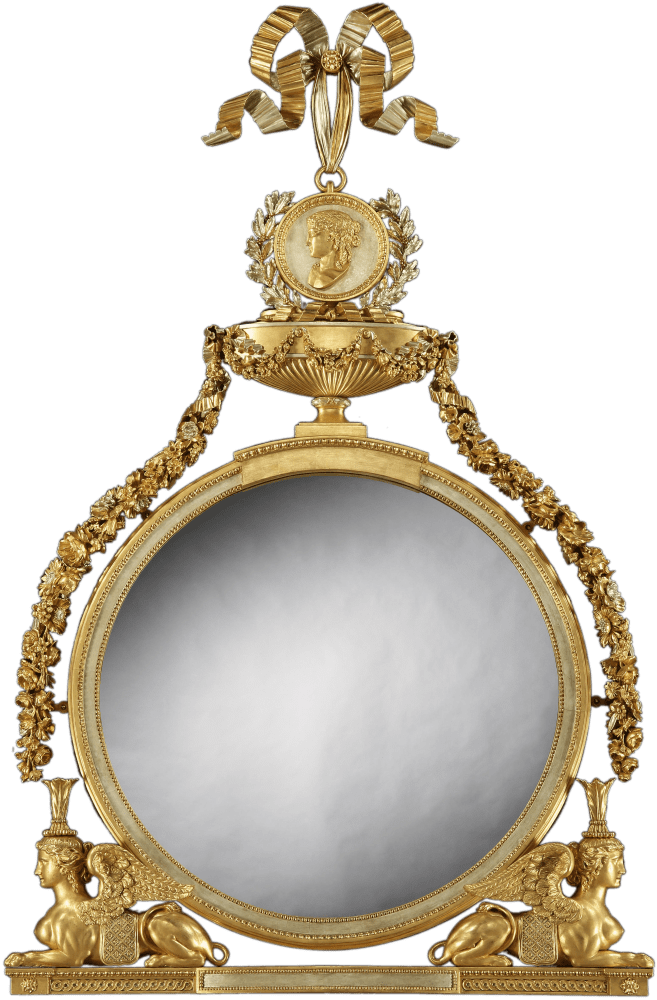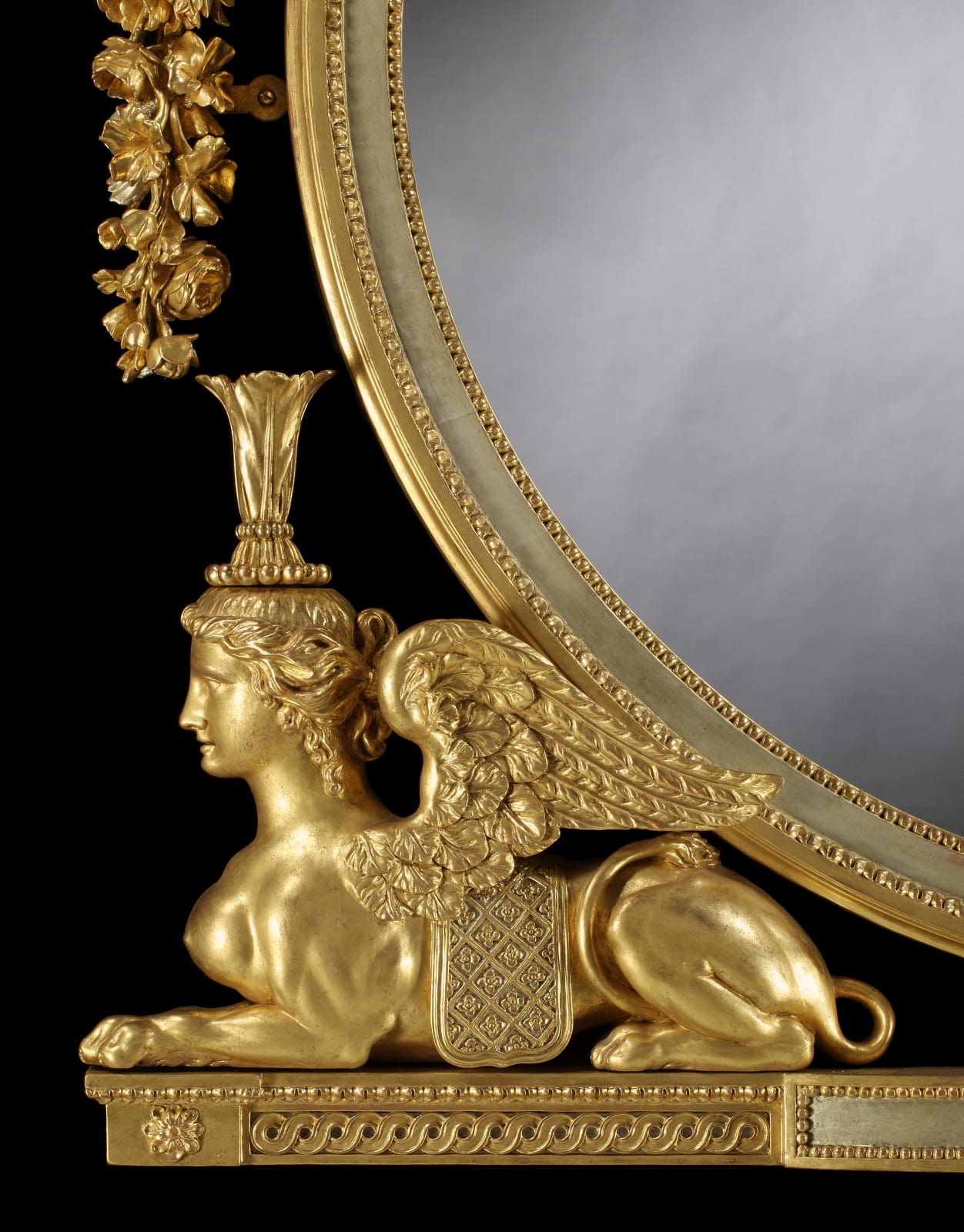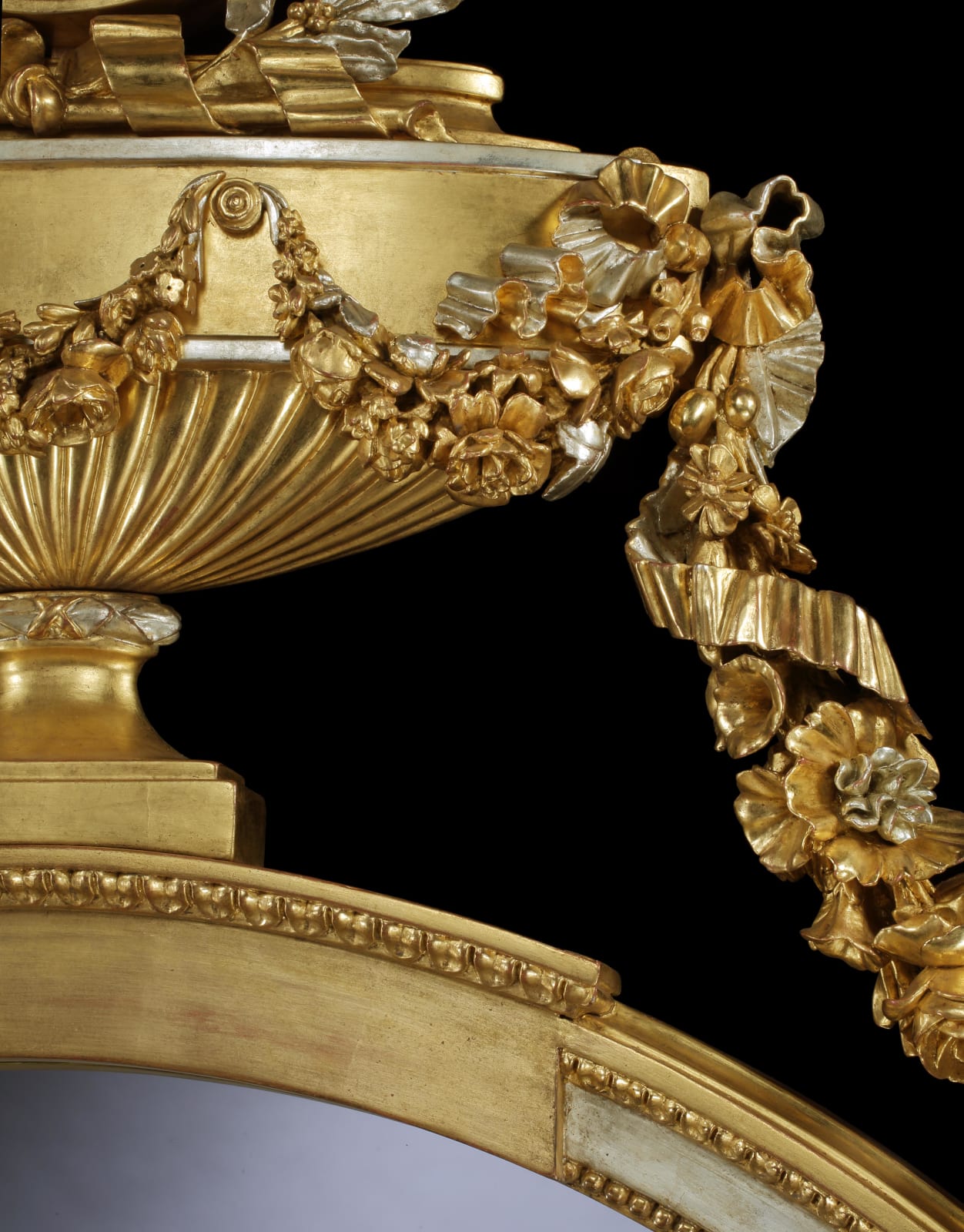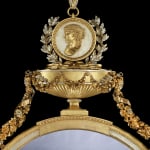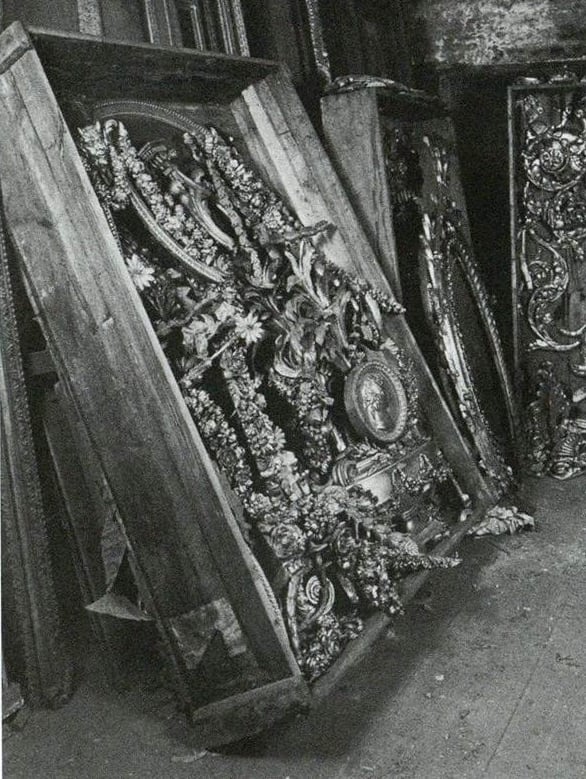
Some of the Chippendale carvings stored after Barry's refurbishment of the 1850's, photographed in the late 1970's
THE HAREWOOD HOUSE MIRROR, English, 1786
Width: 4 ft ½ in; 123.5 cm
Further images
A George III giltwood mirror from the white drawing room by Thomas Chippendale.
This mirror, a remarkable discovery, is identical in many carved elements and in construction to a pair of mirrors sold from Harewood House, Yorkshire, England, in 1987. That pair, now in a private collection, differ in not having sphinx platforms.
It was evident that our mirror had lost its ribbon tied roundel, and we were fortunate enough to be able to use photographic evidence and the experience of Carvers & Gilders Ltd. of London to reinstate it. The mercury silvered mirror plate is a replacement. A pendent apron originally attached to the base of the mirror is missing.
THE HAREWOOD HOUSE COMMISSION 1767–1778
Thomas Chippendale was first recorded working for Edwin Lascelles of Harewood House as early as 1767, and after Chippendale’s death the documented commission continued with his son, also Thomas, until the late 1770s. This remarkable commission may, however, have spanned almost thirty years, furnishing Harewood and other Lascelles family homes, including their house in London.
Many of the Harewood papers relating to Chippendale’s work have been preserved, making it possible to identify some of the pieces by the master at Harewood. There are some gaps, however, and records of Chippendale’s early work at Harewood and the other houses have been lost.
Harewood House underwent extensive refurbishment in the 19th century under Charles Barry, and many Chippendale features and fittings were removed, dismantled and stored in the attic of the house. Entire walls were removed, and the layout of rooms was changed drastically. The furniture was moved around the house over the years, making it almost impossible to ascertain which piece originally belonged where.
Christopher Gilbert, whilst researching Chippendale for his seminal work on the master cabinet-maker, visited Harewood in the late 1970s and photographed the storage boxes containing Chippendale fragments. It was not until the late 1980s that the boxes were emptied and recorded systematically, and some mirrors were re-assembled where possible by Carvers & Gilders Ltd.
Circular mirrors are exceptionally rare, and no other Chippendale commission for the supply of circular mirrors is known.
A platform of identical size and design has been found in the store rooms at Harewood House. Identical sphinx carvings can be found surmounted on later pier mirrors in the Cinnamon Drawing Room (formerly the White and then the Green Drawing Room), where the mirror had originally been installed. This evidence links the mirror unequivocally to the other pair of circular mirrors and to Chippendale’s work at Harewood House.
The only surviving pendent apron has been retained by Harewood House.
Research within the Harewood archives has revealed that this circular mirror was in fact originally one of a set of four mirrors.
The original furnishings of the White Drawing room were soon after they were installed altered. Two large paintings arrived and wall space was needed to hang them.
Two circular girandoles were at this point removed and partially dismantled.
IT is possible that the mirrors were then moved to Portman Street,Edwins London residence. There the 1795 inventory following Edwin's death record ‘2 Circular Glass Girandoles in very Rich Carv’d and Gilt frames’ in Edwin’s bedchamber.
His widow retained the house and furnishings and it is not known where the mirrors went after this until our appeared on the American market many decades later. The whereabouts of the fourth circular mirror is not known.
Provenance
Edwin Lascelles, 1st Baron Harewood, Harewood House, Yorkshire, England;
Probably transferred to Portman Street at some stage before the 1795 Inventory was taken and retained by his widow. with the house on Portman street.
Collection of Chalmers Benedict Wood, US Foreign Service Officer in London 1964 - 1966 and US Ambassador, Wellington, New Zealand (between 1972 and 1974),
transferred back to USA.
Literature
Christopher Gilbert, ‘Chippendale’s Harewood Commission’, Furniture History Journal, 1973, vol. 9, pp. 27–31.
Illustrated:
Ronald Phillips Ltd., catalogue, 2017, pp. 6–9.

